
Starting June 1st, 2023 Our warehouse fee will be $0.65/cubic foot per month
In effort to lower the warehouse storage fee during inflation, we have went narrow aisle racking.This construction took us four months but the project is finally completed. With narrow aisle racking, we are able to drop storage by 24%.We as partners will go through this inflation together.
10/08/2024
Every year, shipping companies across the United States and Canada handle various types of water tanks, transporting them over long distances. However, finding a reliable shipping provider capable of hauling large tanks efficiently and safely can be a challenge. Some companies may not offer the precise logistics needed for such complex transport, while others fail to provide clear and accurate quotes, leaving customers uncertain about the total cost.
Are you wondering how to move a large water tank from one location to another? Read Worldcraft Logistics' article to learn more about the information you need.
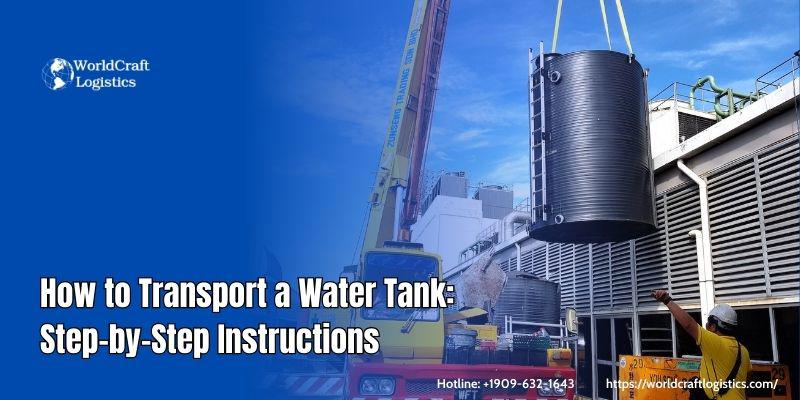
Shipping a water tank requires careful planning to ensure that the tank arrives safely and without damage. Here's a step-by-step guide on how to ship a water tank:
Size and Weight: Measure the dimensions (length, width, height) and weight of the water tank. This will affect the shipping method, packaging, and carrier choice.
Material: Consider the material of the tank (plastic, steel, etc.), as this will determine how fragile or durable it is during transit.
Freight Shipping: For large water tanks, freight shipping is the most practical option. You can use Less-than-Truckload (LTL) for smaller tanks or Full Truckload (FTL) for larger ones.
Flatbed Truck: If the tank is exceptionally large or irregularly shaped, shipping via a flatbed truck may be the best option. This provides easy loading and unloading.
Container Shipping: If you are shipping internationally or across long distances, a water tank can be placed inside a shipping container.
Empty the Tank: Ensure the tank is fully drained, cleaned, and dry before shipping.
Cap or Seal Openings: Seal all openings to prevent any damage or debris from entering the tank during transit.
Disassemble (if possible): If the water tank can be disassembled, break it down into smaller, manageable parts to save space and reduce shipping costs.
Palletizing: Place the tank on a sturdy pallet for easier handling and transportation. Secure it with straps to keep it stable.
Crating: For extra protection, consider using a wooden crate or frame, especially if the tank is fragile or likely to be damaged.
Padding: Add padding such as foam or bubble wrap to protect the tank from scratches, dents, or other forms of damage during shipping.
Clearly Label the Package: Mark the package as "Fragile" or "Handle with Care" if the tank requires careful handling.
Include Shipping Documents: Ensure all necessary documentation, including bills of lading, shipping labels, and any export/import paperwork, are completed and attached.
Freight Companies: Work with reputable freight companies that have experience handling large and bulky items. Some logistics providers specialize in shipping oversized or specialized goods like water tanks.
Insurance: Consider purchasing shipping insurance for extra protection in case of damage or loss during transit.
Tracking: Use the carrier’s tracking system to monitor the shipment and ensure it is on schedule.
Communication: Stay in contact with the freight provider for updates, especially if any issues arise during transit.
Ensure Proper Equipment: If the water tank is heavy or large, make sure the destination has the necessary equipment like forklifts or cranes to safely unload the tank.
Inspection: Upon arrival, inspect the water tank for any damage before signing off on the delivery. If there are any issues, document them immediately and contact the carrier.
Shipping water tanks requires careful consideration, particularly when it comes to the type of material they are made from. Each material has unique properties that impact how the tank should be handled, packaged, and transported. Below are specific instructions for shipping various types of water tanks based on the material:
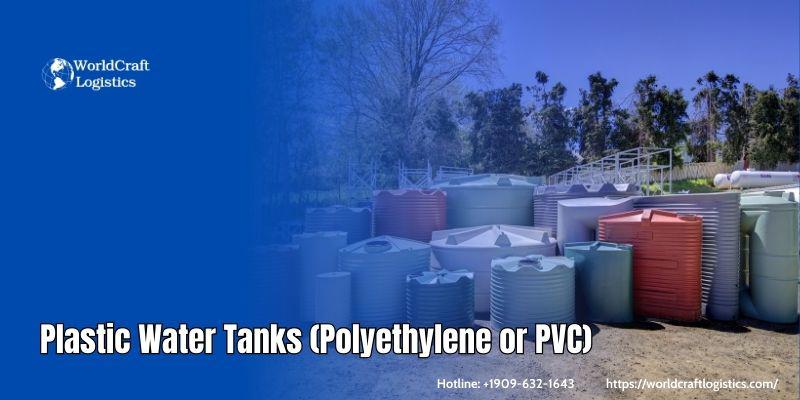
Plastic water tanks are lightweight and durable but prone to deformation under heavy pressure.
Protection from Deformation: Secure the tank on a flat, stable surface to avoid any bending or distortion during transport. Straps should be used carefully to avoid warping.
Weather Considerations: If shipping over long distances, protect plastic tanks from extreme temperatures to prevent cracking or warping.
Padding and Support: Use padding to protect the tank from impact, particularly if it is being shipped with other goods. Crates or customized frames are recommended to secure the tank during transit.
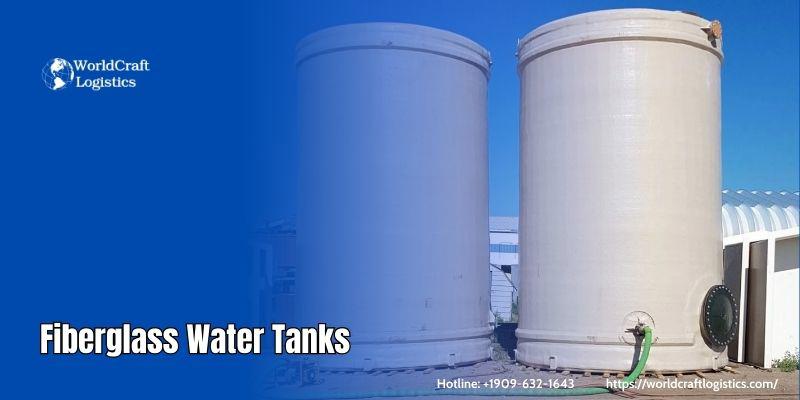
Fiberglass tanks are sturdy and resistant to corrosion, but they are also fragile and can crack if not handled properly.
Fragile Labeling: Clearly label the tank as fragile, and use proper lifting equipment to avoid accidental impacts during loading and unloading.
Crating or Palletizing: Use custom crating or pallets to provide support and protect the tank's surface from scratches or cracks. Ensure the tank is securely fastened to prevent movement.
Light Handling: Avoid placing heavy items on top of the tank to prevent any damage to the fiberglass structure.
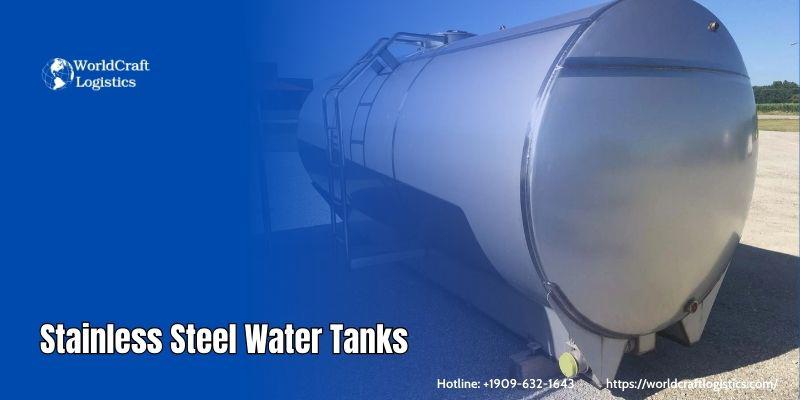
Stainless steel water tanks are robust and ideal for industrial use, but they can be susceptible to scratches or dents during transport.
Scratch Protection: Wrap the tank in protective material, such as foam padding or shrink wrap, to safeguard the surface from scratches or dents.
Heavy-Duty Support: Stainless steel tanks are heavier than plastic or fiberglass, so use strong, reinforced pallets or crating to support the weight during transport.
Securing the Tank: Use strong straps to hold the tank securely in place, ensuring the straps are padded to avoid leaving marks on the surface.
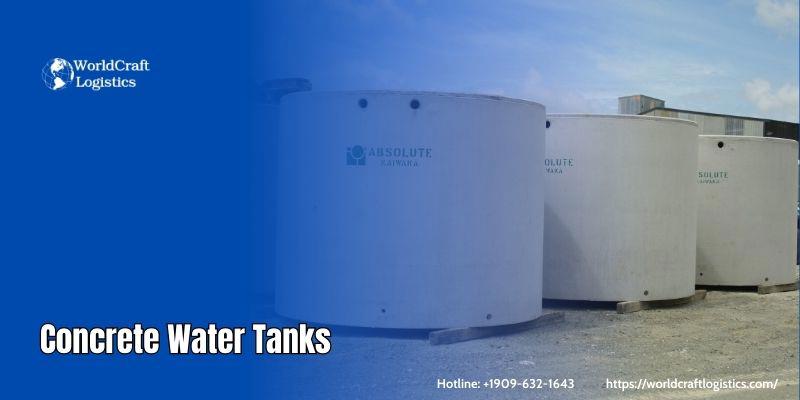
Concrete tanks are extremely heavy and durable but require specialized equipment for handling due to their weight.
Heavy-Duty Equipment: Use cranes, forklifts, or other heavy-duty equipment to load and unload concrete tanks, ensuring the weight is distributed evenly to avoid cracking.
Securing on Transport Vehicle: Secure the tank using reinforced straps and padding to prevent it from shifting during transit. Be sure to use a flatbed truck or other specialized vehicle capable of handling the load.
Avoid Pressure Points: When securing the tank, avoid over-tightening straps that could create pressure points and lead to cracks in the concrete.
By following these instructions, you can ensure that your water tank, regardless of material, arrives safely and without damage.
The cost of shipping water tanks can vary based on several factors, including the size and weight of the tank, distance, shipping method, and additional services like permits or special handling. Below is a general price table to provide an idea of the range of costs involved in shipping water tanks within the United States. Keep in mind that prices will vary depending on the shipping company and specific needs.
Tank Size/Type | Local Shipping (up to 200 miles) | Regional Shipping (200-500 miles) | Long-Distance Shipping (500+ miles) |
Small Plastic Tank (500-1000 gallons) | $150 - $400 | $400 - $800 | $800 - $1,200 |
Medium Plastic Tank (1000-2500 gallons) | $300 - $600 | $600 - $1,200 | $1,200 - $1,800 |
Large Plastic/Fiberglass Tank (2500-5000 gallons) | $500 - $1,000 | $1,000 - $1,800 | $1,800 - $2,500 |
Stainless Steel Tank (1000-3000 gallons) | $600 - $1,200 | $1,200 - $2,200 | $2,200 - $3,500 |
Concrete Tank (5000+ gallons) | $1,000 - $2,000 | $2,000 - $4,000 | $4,000+ |
Factors Affecting the Cost:
Tank Size & Weight: Larger and heavier tanks, like concrete or stainless steel, will cost more to ship due to the need for specialized equipment and more complex logistics.
Distance: The further the destination, the higher the cost due to fuel, labor, and potential permit requirements for crossing state lines with oversize loads.
Additional Services: Costs can increase if cranes or forklifts are needed for loading/unloading, or if special crating or padding is required to protect the tank during transport.
Permits & Escorts for Oversize Loads: Oversized tanks (those exceeding standard road dimensions) require special permits and may need escort vehicles, adding to the cost.
This price table offers an estimate, and you should request a detailed quote from a shipping provider to get exact pricing based on your specific needs.
When it comes to transporting large and oversized cargo, such as water tanks, you need a shipping partner with expertise, reliability, and a commitment to efficiency. Worldcraft Logistics is your trusted partner for handling oversized cargo shipping, ensuring safe and timely deliveries no matter the size, weight, or distance.
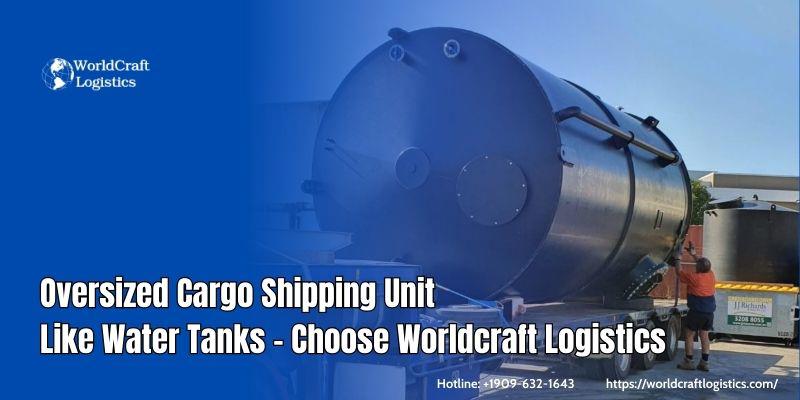
👍 Specialized Expertise in Oversized Shipments: Shipping water tanks and other oversized cargo requires specialized equipment and experience. At Worldcraft Logistics, we are experts in handling bulky and large items, ensuring that your shipment is properly secured and transported with care. From planning to delivery, our team manages every step of the logistics process.
👍 Custom Solutions for Every Cargo: Every shipment is unique, especially when it comes to oversized items like water tanks. We provide tailored solutions based on the specific needs of your cargo, considering dimensions, weight, material, and destination. Our customized crating, packing, and securing methods ensure the protection and safe delivery of your tanks.
👍 Comprehensive Route Planning and Permits: Transporting oversized cargo often involves navigating complex regulations, obtaining permits, and planning optimal routes. Worldcraft Logistics handles all of these details, ensuring your shipment moves smoothly through different states or regions without delays. We secure the necessary permits and coordinate any required escort vehicles for oversized loads.
👍 State-of-the-Art Equipment: Worldcraft Logistics is equipped with the latest tools and technologies to manage oversized cargo. Whether you need flatbed trucks, cranes, forklifts, or specialized lifting devices, we have the equipment to handle the loading, transport, and unloading of even the largest water tanks safely and efficiently.
👍 End-to-End Logistics Support: From the moment you contact us, we offer full-service support, including cost estimation, route planning, permit acquisition, and real-time tracking of your shipment. Our team ensures smooth communication at every stage, giving you peace of mind throughout the shipping process.
👍 Competitive Pricing with No Hidden Costs: Oversized cargo can be expensive to transport, but at Worldcraft Logistics, we provide transparent pricing with no hidden fees. We offer competitive rates for shipping water tanks, whether it’s a local, regional, or long-distance haul.
👍 Safety and Compliance: Your cargo’s safety is our top priority. We follow strict safety protocols to protect your water tanks from damage during transit. Additionally, we ensure that all legal requirements, including weight limits and transportation regulations, are met to guarantee a smooth delivery process.
When you choose Worldcraft Logistics, you’re choosing a partner with unmatched expertise in oversized cargo shipping. Whether you're moving water tanks for industrial, commercial, or personal use, we provide the solutions you need to ensure a smooth and stress-free shipping experience. Contact us today for a quote and let us handle your next oversized cargo shipment.
Related articles:
The best method to ship a water tank depends on its size, material, and destination. For smaller tanks, standard freight shipping works well, while larger or oversized tanks may require flatbed trucking, special crating, and securing systems. Shipping companies with experience handling oversized or heavy cargo are often the best choice.
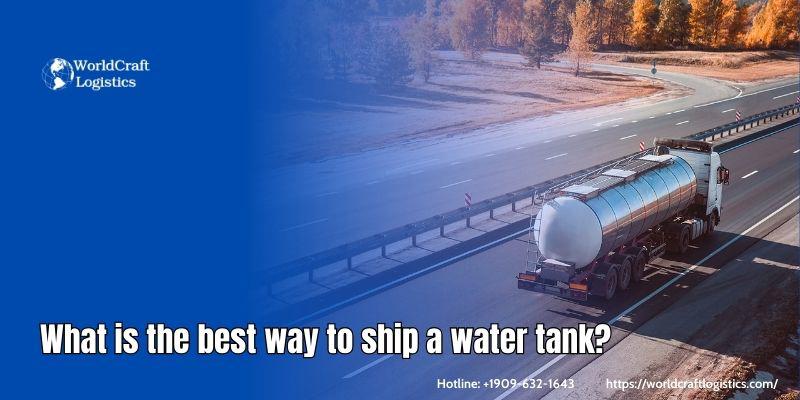
Yes, if the tank is oversized (exceeds legal width, height, or length limits for standard roadways), you will need special permits. Some states also require escort vehicles for tanks that exceed certain dimensions. The shipping company can assist in obtaining these permits.
Tanks should be properly crated or supported using custom packaging to avoid damage. Use padding or cushioning materials to prevent impacts, and secure the tank firmly with straps to avoid shifting during transit. For fragile materials like fiberglass, ensure that extra care is taken to avoid cracking or scratching.
The delivery time depends on the shipping distance and the complexity of the logistics. Local shipments may take just 1-3 days, while regional or long-distance deliveries can take several days to a week or more. Delays may occur if permits are needed for oversized loads or if there are other logistical challenges.
It is highly recommended to obtain shipping insurance, especially for large, valuable, or fragile tanks. Insurance helps cover any potential damage that may occur during transit, such as scratches, dents, or structural damage.
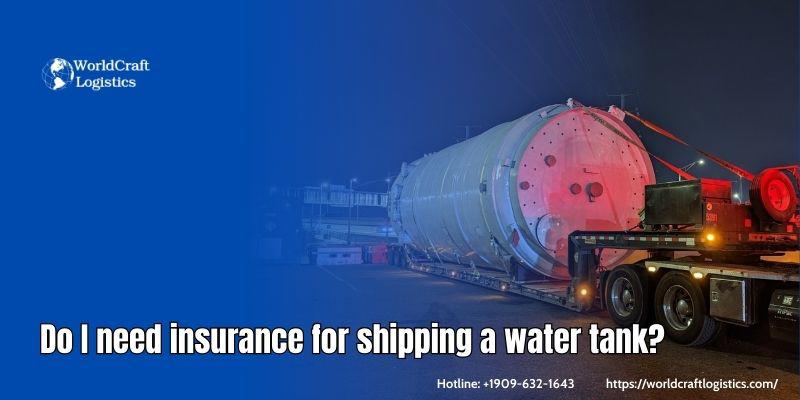
For larger tanks, cranes, forklifts, or specialized lifting equipment may be required for safe loading and unloading. Smaller tanks can usually be handled with standard pallet jacks or manual labor, depending on their weight and dimensions.
Most reputable shipping companies offer tracking services, allowing you to monitor the location of your tank in real time. This can give you peace of mind and help you plan for delivery.
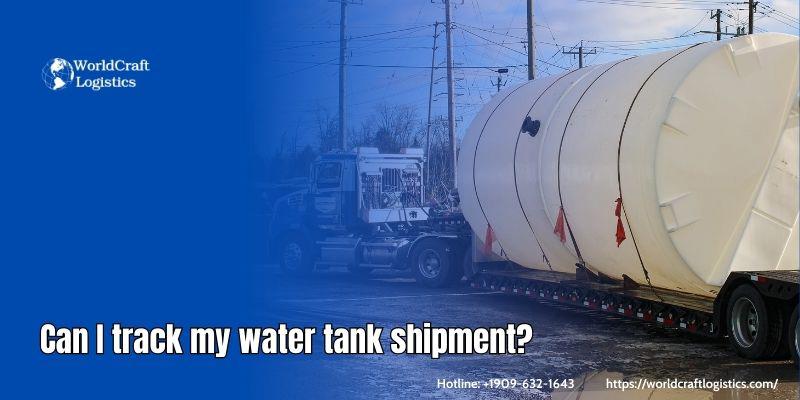
By understanding these common questions, you’ll be better prepared to ship your water tank safely and efficiently.
In conclusion, shipping a water tank requires careful planning, the right equipment, and a trusted logistics partner. By understanding the size, material, and shipping requirements, you can ensure safe and cost-effective transport. Whether you're moving a small plastic tank or a large industrial one, following these steps will help streamline the process and protect your investment. Make sure to choose a reliable shipping provider to ensure timely and secure delivery of your water tank.
SEO
Digital Marketing/SEO Specialist
Simon Mang is an SEO and Digital Marketing expert at Wordcraft Logistics. With many years of experience in the field of digital marketing, he has shaped and built strategies to effectively promote Wordcraft Logistics' online presence. With a deep understanding of the logistics industry, I have shared more than 500 specialized articles on many different topics.
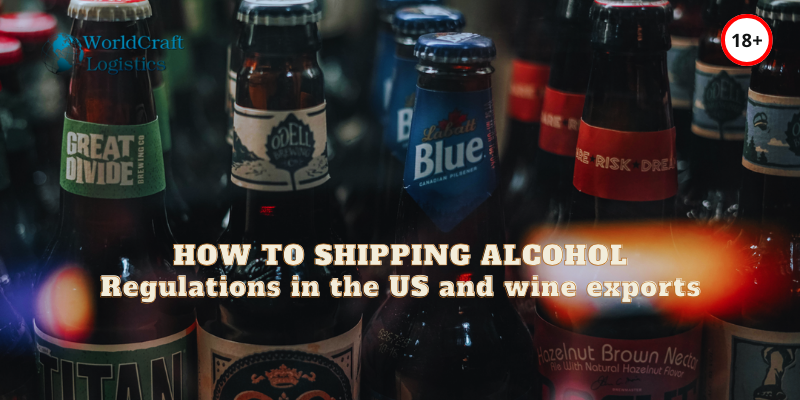
Shipping
12/21/2023
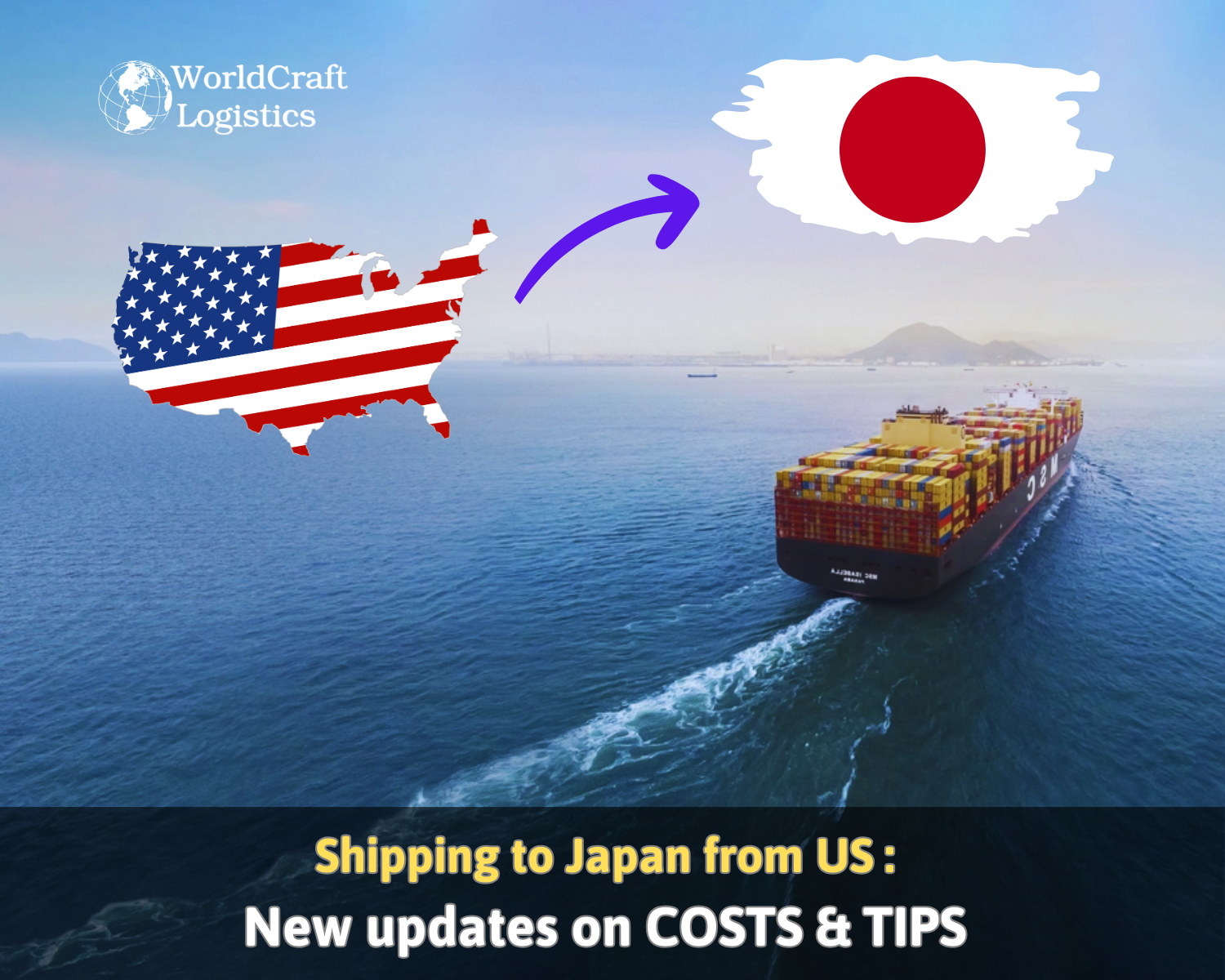
Shipping
02/28/2024

Shipping
12/24/2023
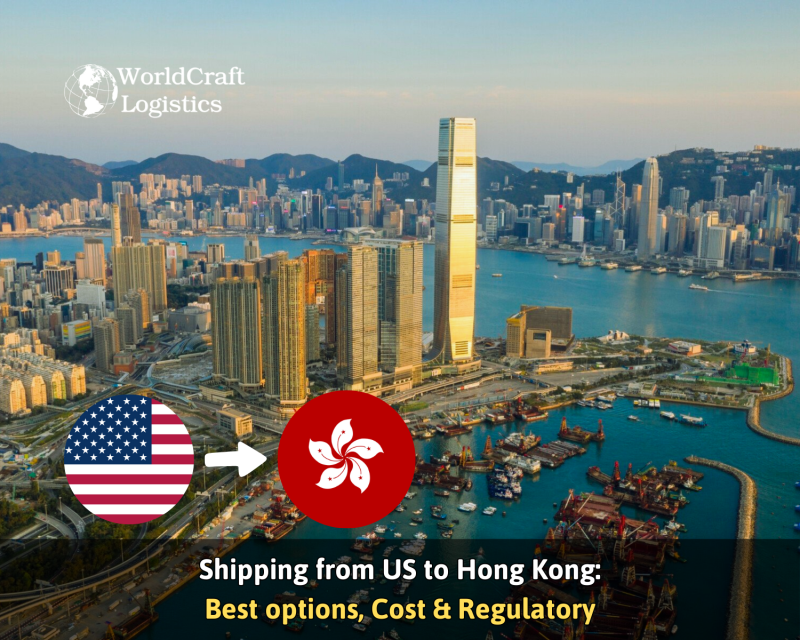
Shipping
04/02/2024
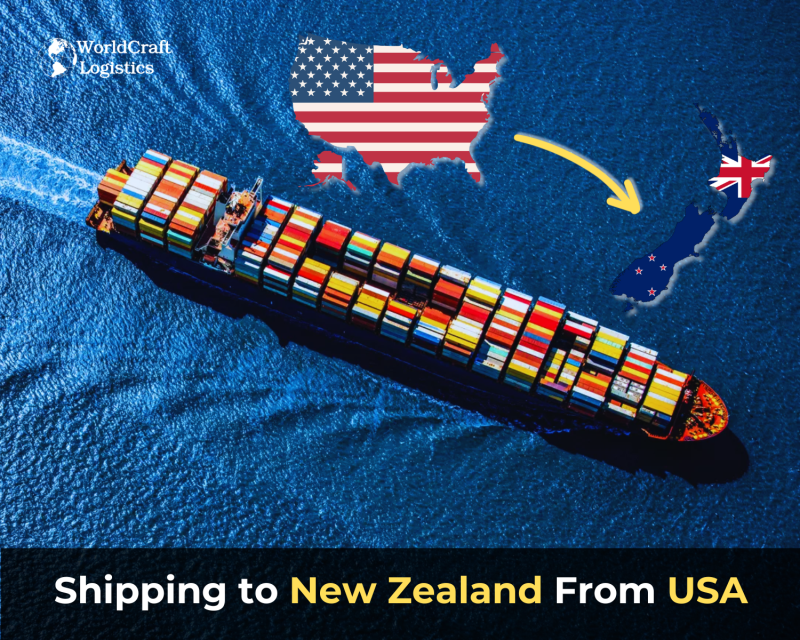
Shipping
11/04/2024